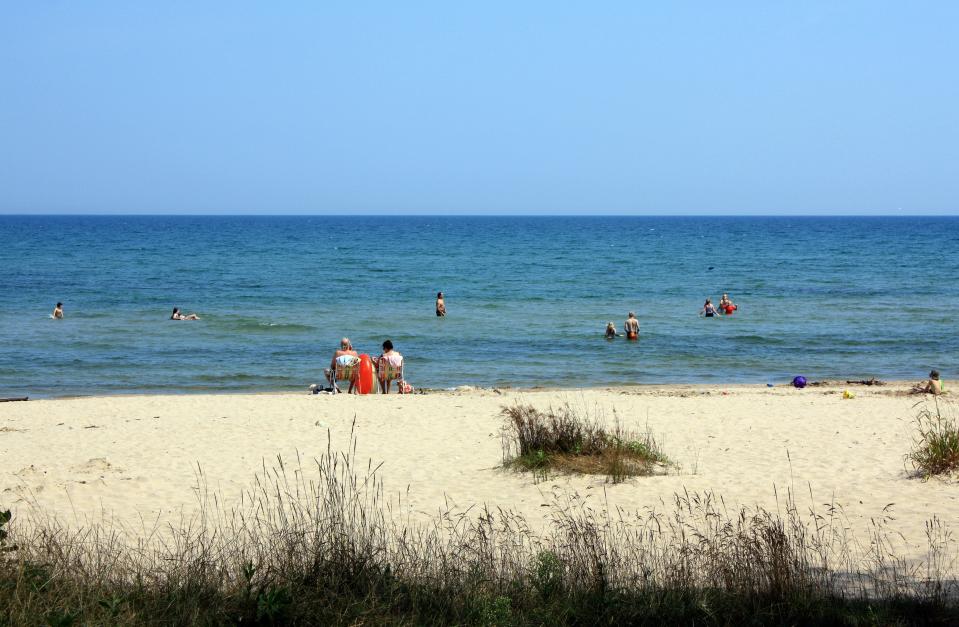Dangerous currents in Great Lakes claim lives every summer. Here's what you need to know about them.
Wednesday night, Mohammad Hassan, a 17 year old Oak Creek Resident, drowned at Bender Park Beach. What should have been a pleasant evening out on the beach ended in tragedy.
Fatal drownings like the one that occurred yesterday are especially common in the summer. A spate of them occurred in 2021 when there were a shortage of lifeguards. Closed in 2020 after several fatalities, McKinley beach will reopen this year. Despite the added safety measures, the redesigned McKinley beach may not have many life guards this summer.
Since 2016, there have been an average of about 25-30 fatalities on the Great Lakes due to dangerous currents, according to Dave Benjamin, co-founder and executive director of Great Lakes Surf Rescue Project.

Had Hassan checked the National Weather Services that night, he would have see a moderate swim risk warning. Nothing too concerning.
But that is when most deaths occur, Benjamin said, because the waters may appear safe.
Rip currents can be deadly and can catch people unaware. Here's what you need to know about them.
What are the dangerous currents on Lake Michigan?
Rip currents are most likely when the wind is blowing towards the shore and the waves appear chaotic.
When heavy winds blow waves toward the shore, the water needs to find a way back out. So it forms a fast flowing channel out and away from the shore. That is a rip current, JJ Wood a meteorologist with the National Weather Service explained.
There are some misconceptions about rip currents. People often call them rip tides, which gives the impression that they have something to do with tides. But they can occur even when there are no tides.
Another dangerous current to be wary of is a structural current. When the wind blows parallel to the shore, the current can take swimmers towards a jetty, or pier, where the water whirlpools around the structure before pushing away from the shore.
Both types of currents can push you away from the shore very quickly.
What to do before you go to the beach
The National Weather Service tracks the wind and the waves for large areas of water and puts out a general beach hazard statement. But on the night of the June 27, the hazard level for the Milwaukee area was only moderate.
That is why Benjamin says the National Weather Service levels are not the best bet, because conditions at specific beaches can vary a lot. "The only way that you can get an accurate assessment of your local beach conditions is if you have lifeguards there," he said.
Life guards will put up flags of different colors depending on the safety level at the beach. Green for waves less that two feet, yellow for waves between two and four feet and red for waves above four feet. If your local beach has a life guard, the surest way to know the safety of the waters is to check those flags.
But many beaches do not have active life guards, updated beach hazard signage or public rescue equipment, Benjamin said. Even if a beach has active life guards they may not always be around.
In his work educating the public on water safety he recommends that "it's best to swim at a lifeguarded beach during lifeguard hours, otherwise your risk goes up exponentially."
What to do if you find yourself in a rip current
Swimming against a rip current can be very hard and the current can easily pull you away from the shore. What can you do if you get caught in a rip current?
It is also important to know your swimming ability. Even though a lot of people know how to swim, they may not best practices for swimming safety.
Instinctively you may want to swim back to shore, or you may have heard that you should swim parallel to the shore. But according to Benjamin, those solutions will only deplete your energy.
A 2021 video put out by the Great Lakes Surf Rescue project recommends a "flip, float and follow" strategy. That means getting on your back and floating with the current, while trying to regulate your breathing. Benjamin said this will help to reduce panic and conserve your energy before you swim parallel to the shore and find your way back or call for help.
This article originally appeared on Milwaukee Journal Sentinel: What to know about dangerous rip currents in Lake Michigan

